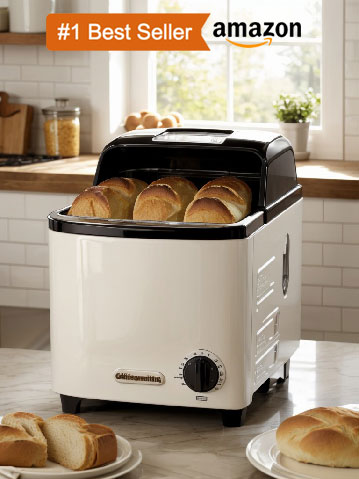Bread Machine Pizza Dough Not Turning Out
Making pizza dough in a bread machine can be a great way to save time and effort when preparing a delicious meal. However, if the dough is not turning out as expected, it can be a frustrating experience. There are a variety of reasons that the dough may not be turning out as desired, and it is important to understand the process of making pizza dough in a bread machine in order to troubleshoot any issues.

Make sure you use the right type of yeast for your dough: either active dry yeast or instant yeast.
When it comes to selecting the right type of yeast for your dough, it is important to consider the differences between active dry yeast and instant yeast. Active dry yeast is made from granules of live yeast cells that have been dried and deactivated, requiring rehydration and activation prior to use. It needs to be dissolved in warm liquid (105-115°F) before adding to the dough.
Instant yeast, on the other hand, is a more modern type of yeast made from dried, compressed active yeast cells and does not require rehydration or activation prior to use. It can be added directly to the dry ingredients in the dough and activated by the moisture from the other ingredients. When using active dry yeast in a recipe, it is important to double or even triple the amount called for if you are substituting instant yeast, as active dry yeast is not as strong as instant yeast. Ultimately, when selecting the right type of yeast for your dough, you should consider the amount of time you have available to prepare the dough, as well as the type of recipe you are making.
Make sure that all the ingredients are at room temperature when you add them to the bread machine.
When adding ingredients to a bread machine, it is important to make sure that all of the ingredients are at room temperature. This is because if the ingredients are too cold, they will not mix properly and the dough will not rise as expected. Additionally, cold ingredients can cause the bread machine to take longer to knead and proof the dough.
For best results, it is recommended to measure out all of the ingredients in advance and leave them at room temperature for at least 30 minutes before adding them to the bread machine. This will ensure that all of the ingredients are properly mixed together for a successful outcome.
See also: Bread Machine Substitute White For Brown Sugar
Use the correct measurements of flour and water for the recipe you are using.
The correct measurement of flour and water for a recipe is essential to ensure a successful outcome. When measuring flour, it is best to use a kitchen scale or measuring cups and spoons, depending on the recipe. Flour can be measured in cups, tablespoons, or grams.
Measuring water is typically done in cups, milliliters, or liters. It is important to use the measurements indicated in the recipe to ensure that the desired results are achieved. Adding too much or too little water or flour can drastically affect the consistency and texture of the finished product. Additionally, it is important to use cold water when making doughs or batters, as hot water can cause gluten strands to bind together and create a tough texture. With the appropriate measurements of flour and water, a successful outcome can be guaranteed.
See also: How To Make Stollen In A Bread Machine
Choose the correct setting on your bread machine for making pizza dough.
The correct setting for making pizza dough in a bread machine is the dough' setting. This setting will prepare the dough with the correct consistency and texture for a delicious pizza. When using this setting, it is important to measure out your ingredients accurately and add them in the correct order.
Begin by adding the liquid ingredients first, followed by the dry ingredients, and finally, the yeast. This helps to ensure that the yeast is kept away from the liquid when it is added, which will help it to activate properly and produce the best results. Once all of the ingredients have been added, select the dough' setting on your machine and press start. Depending on the model of your machine, this setting may also require you to select the type of dough you are making, such as pizza dough'. After pressing start, your machine will mix, knead and rise the dough to the perfect consistency for pizza making.
See also: How To Make Pizza Dough In My Zojirushi Bread Machine
Don't open the lid of the bread machine before the kneading cycle is complete.
It is important to refrain from opening the lid of the bread machine before the kneading cycle is complete. Doing so can cause a disruption in the process that the machine is going through, as it may cause an uneven distribution of ingredients, leading to an uneven kneading. Additionally, the sudden influx of air from opening the lid can cause the dough mixture to expand and rise too quickly, which can alter the texture of the finished product.
Furthermore, opening the lid during the kneading process can lead to the dough sticking to the sides of the bread machine, creating a mess and making it difficult to clean. For these reasons, it is best to wait until the kneading cycle is completed before opening the lid of the bread machine.
See also: Can You Make Pie Crust In Your Bread Machine
Let the dough rise in a warm place, away from drafts, until it doubles in size.
To ensure that your dough rises properly, it is best to find a warm, draft-free environment to let the dough rise. A good temperature for the dough to rise is between 80-90°F (27-32°C). You can place the dough in an oven that has been preheated to the lowest setting and then turned off, or in a bowl covered with a damp cloth.
Allow the dough to rise until it doubles in size. This could take anywhere from 1-2 hours, depending on the temperature and humidity of the environment. Make sure to check the dough periodically and gently press down on it with your finger. If the indentation remains, then the dough is ready for the next step.
See also: Unplugged Bread Machine Without Turning Off First
If the dough is too wet or sticky, add a little more flour and knead it again.
When making dough, one of the most important steps is ensuring that the texture of the dough is correct. If the dough is too wet or sticky, it can throw off the entire recipe. To fix this problem, add a little flour to the dough and knead it again.
This will help to absorb some of the moisture and create a more workable dough. Be sure to add the flour gradually, as it's easy to add too much and end up with a dense and dry dough. Knead the flour into the dough until it no longer sticks to your hands and the texture feels right. If the dough is still too wet or sticky, add a little more flour and knead it again until you achieve the desired consistency.
Preheat the oven to the temperature recommended in your recipe before baking the pizza.
Before baking a pizza in the oven, it is important to preheat the oven to the temperature indicated in the recipe. This ensures that the pizza will be cooked properly and evenly. The temperature required for baking pizza can vary depending on the type of crust and toppings used.
Generally, the oven should be preheated to temperatures between 375-425 degrees Fahrenheit. To preheat the oven, first set the desired temperature on the oven's dial and wait for the indicator light to turn off. This indicates that the oven has reached the desired temperature. After preheating, place the pizza in the oven and bake until it is golden brown and all of the cheese is melted. Following the instructions of your recipe will help you create delicious and flavorful pizza.
Make sure the oven rack is placed in the center of the oven so that the pizza bakes evenly.
Before baking a pizza in the oven, it is important to make sure that the oven rack is properly placed in the center. This is essential for ensuring that the pizza bakes evenly and does not become burned or undercooked in certain spots. To do this, first locate the center of the oven by measuring from the sides.
This can be done either by eye or by using a ruler or measuring tape. Once the center is located, carefully slide the oven rack into place. It is important to be gentle while doing this to prevent any damage to the oven. After the oven rack is in place, the pizza can be safely placed on it and baked. Following this step will help ensure that the pizza comes out of the oven perfectly cooked and with an even, crispy crust.
Be patient when baking the pizza; it could take up to 30 minutes for the pizza to be done.
Baking a pizza requires patience and attention to detail. The oven must be preheated to the temperature specified by the recipe, and then the pizza should be placed in the oven. During baking, the pizza should be monitored closely to ensure that it does not overcook.
Depending on the size of the pizza and the oven temperature, it can take up to 30 minutes for the pizza to be done. To ensure that the pizza does not burn, it is important to check the bottom of the crust for signs of doneness. If the crust is golden brown, it is likely done. Additionally, it is important to keep an eye on the cheese and toppings to make sure they do not become too dark or burnt. Furthermore, it is beneficial to rotate the pizza halfway through baking in order to ensure even cooking and prevent any uneven spots. Once the pizza is finished, it should be allowed to cool for a few minutes before being served. With patience and attention, your pizza will come out perfectly cooked and ready to enjoy.





